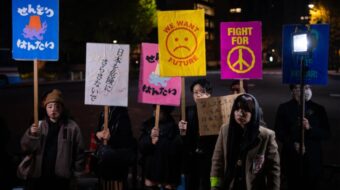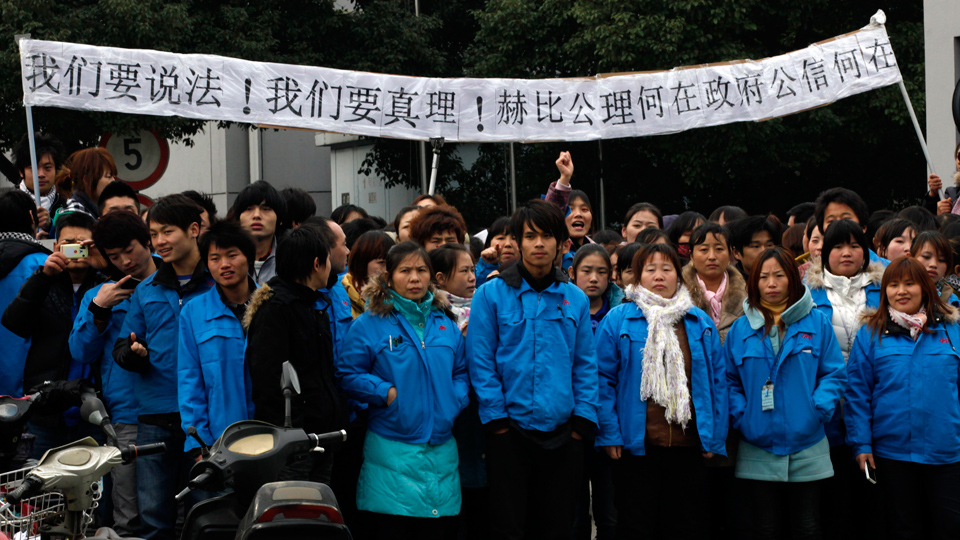
SHANGHAI—Since the Communist Party under Deng Xiaoping began market reforms and rolled out the welcome mat to foreign capital some forty years ago, China has not ceased to fascinate, and frequently please, the West’s rich and powerful.
The owners of global capital have been delighted to gain access to a huge and relatively inexpensive workshop in which to produce the goods that European and North American shoppers consume. They are almost as happy right now to be selling those same goods—and services—in a huge and increasingly affluent Chinese market. Meanwhile, mainstream and business media, along with western politicians frustrated with sluggish growth or recession in their own jurisdictions, have had little choice but to swoon over Chinese growth rates. Decades of double-digit GDP expansion in China may have slowed to seven percent today, but such a figure still makes many occidental mouths water.
Of course, the same story is what enrages much of the western left. The Chinese Communist Party, they say, has pursued wild growth while forgetting social justice and the environment. Now, market forces rule a land freed in 1949 from imperial domination in the name of human liberation. The prevailing faith in the People’s Republic is no longer equality but shopping and the gospel of elevated social status. Socialism, just a word for power, is not to be taken seriously any longer. And the workers have been forgotten.
The CCP naturally ridicules this notion. Workers are more prosperous than ever. Almost all of them are, including (and sometimes especially) the children of migrants from rural areas, as well as those who are themselves migrants from rural areas to the country’s booming industrial zones.
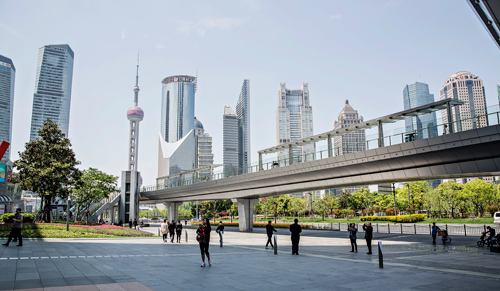
And Shanghai looks like Paris, Milan and New York. Or better.
Indeed, neither the social-justice-minded critics of the Chinese model nor those who praise its extraordinary achievements are without evidence for their assessments. Young people with few prospects at home have flocked by the hundreds of millions from the countryside to China’s cities and factory towns. Or they have opened restaurants or become providers of other services in the country’s huge metropolises. They have done so, it needs to be said, voluntarily, in quest of a richer life—and they have very often found one.
They have also worked frightfully long hours for low pay, suffered industrial accidents, been cheated of wages, and left unemployed when their employers closed shop. Investing multinationals have been known to exploit student labor as well; a fairly recent scandal involved the Taiwanese Foxconn Technology Group’s use of interns enrolled in vocational institutions. These students’ assignments had little to do with their studies, and they reportedly put in 11-hour shifts on a seasonal basis to assemble the iPhone X.
During the late 1990s and early 2000s, tens of millions were laid off from once-secure jobs as the government closed economically unviable firms and consolidated others in an effort to fashion a smaller-but-better fleet of state-owned enterprises (SOEs). These SOEs will remain the flagship(s) of the Chinese economy, but they will do so as trim, efficient players. Even now, a reduction of anywhere between 1.8 and 6 million additional jobs in coal and steel is underway. (The government has ear-marked considerable funds for income support and loans to, for example, help laid-off workers launch micro-enterprises and start-ups.)
Not afraid to strike
Which brings us to other practical questions. What are workers in this giant socialist market economy doing to defend themselves and enhance their situation? And to what extent are the government and the All-China Federation of Trade Unions aids or hindrances in this process?
An important thing to keep in mind: workers here strike. In my “white-collar” workplace, when grievances arise, colleagues joke about striking. But more than once I have been told that, in reality, Chinese people are obedient and will not cause trouble. Yet this is only true, if at all, about certain workers in certain situations.
Data from organizations that monitor labor issues suggest that work stoppages and work-related protests have been increasing since well-publicized industrial actions rocked Honda plants in Guangdong province eight years ago. In both 2015 and 2016, documented strikes across the country reportedly approached 3,000. In 2014, an epic struggle involved over 50,000 workers in various shoe factories at Yue Yuen Industrial Holdings in Dongguan, as workers contested company failure to make contributions to the social insurance fund. In the same year in Guangzhou, some 2,500 workers at Lide Shoes stopped work following a relocation announcement by the employer—and reported attempts to force workers to sign poorer contracts. 2015 saw 5,000 workers at Stella Shoe Co. leave the factory due to company failure to make housing fund payments.
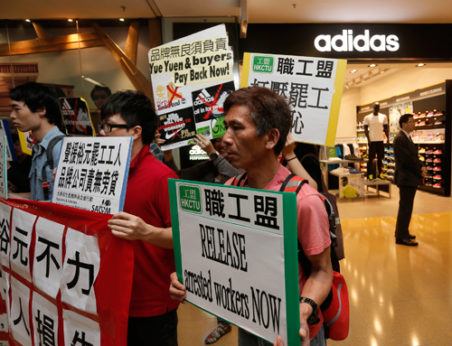
According to China Business Review, by 2016 incidents of unrest in the retail and service sectors were overtaking those in manufacturing. Stoppages at Walmart outlets broke out when the retail giant sought to impose draconian scheduling ‘flexibility’ measures on workers accustomed to regular shifts of sensibly limited duration.
It would be misleading to call actions such as these spontaneous. Many no doubt involved considerable planning and collaboration among workmates. Social media have become key tools for unhappy workers planning protests. But such actions are clearly not coordinated and led by the official All-China Federation of Trade Unions (ACFTU)—which is not to say that functionaries in the organization are necessarily unsympathetic to those who protest.
Harmonious society or class struggle?
What is the official response to class friction? It is not hard to discern. For Beijing, a key feature of “socialism with Chinese characteristics” is “harmonious” development. “Harmonious” is one of the favorite official adjectives in China in 2018. And I don’t think that it is employed with sarcasm.
In general, Communist Party leaders do not want to respond to worker discontent with an iron fist (though the state has prosecuted individuals associated with NGOs involved in workplace struggles). But they do want labor peace. So the plan, or hope, is that the ACFTU will assume a greater role in economic management—leading the negotiation of collective agreements in workplaces throughout the country, identifying problems before they explode, and institutionalizing industrial relations in a way not unfamiliar to students of the post-war West. Reportedly, the Party has said it would like a unionization rate of around 90 percent.
Chinese labor law is quite explicit, if not too detailed, about bargaining rules. In workplaces of 25 or more, employees can form an enterprise trade union. In smaller facilities, committees can be created. In the event that a majority of workers express a desire to enter into bargaining, “a collective agreement shall be concluded by the representative elected by the employees under the guidance of the trade union at the upper level.”
That is not all. Employee Representative Councils and Worker Assemblies are supposed to function. Chapter 1, Article 4 of the Labor Contract Law is clear on the requirement that company rules affecting the working conditions and remuneration of staff be the fruit of consultation, though workers are not given a veto over measures and changes.
Of interest perhaps is a distinction made between the trade union and the workers themselves, acknowledging the opportunity of both to identify a workplace measure as inappropriate. Western human resources specialists working in China today warn their corporate clients against flouting such provisions. According to one firm present in the country, there have been of late “many cases where an employer’s internal policies were found to be invalid during arbitration and litigation for not completing the democratic procedure.” These companies should protect themselves by at least consulting their employees over new measures, advises Global Legal Insights.
The workers’ state…at least when people are watching
But life and legislation can also be worlds apart. Here is a case, merely an anecdote. There is a prestigious academic institution in the country’s largest city whose chief administrator, in early 2018, announced a radical reform in classroom instruction methods. Affected educators were horrified by the hurriedly announced plan. No real consultation had occurred, despite the law, though asses might have been formally covered by some official union stamp of approval. When the time approached to implement these changes, some brave educators protested loudly, with the clear support of their colleagues. Result? The measure was quickly shelved, at least for now.
Officials and influential people do not want to be seen running roughshod over the rights of working people in a country that proclaims itself to be a State of the Working People. But many will abuse their power if they can manage to do so without making too big of a scene.
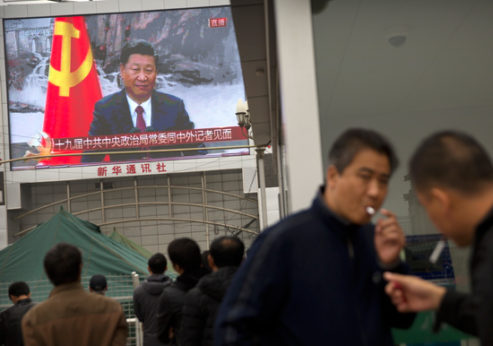
So for how much does the law count? Regarding the right to strike, here is an interesting note: at the moment, relative silence reigns. Article 27 of the Trade Union Law mentions the union’s duty in the event of a “work stoppage or slowdown.” In other words, the possibility of a strike is acknowledged. Otherwise, as far as I know, official China has nothing to say about work stoppages—although local governments and police might respond in ethical or unethical ways in given situations.
In a study conducted between 2012 and 2015, Ivan Franceschini, a contributor to the journal Made in China and an expert on labor relations in the socialist giant, conducted interviews at the gates of nine factories in Shenzhen, Yangzhou, and Chongqing. His conclusions regarding workers’ perceptions of the legality and morality of industrial action were interesting. According to Franceschini, 38.5 percent of respondents considered striking legal, as opposed to only 13.9 per cent who adopted a contrary position (with the balance unsure or declining to express a view).
So we have a grey area (a term I have heard repeatedly since arriving in Shanghai in August). For some, that means an opportunity to assert an essential right that workers don’t prefer to exercise. But how will the Party and government proceed? China’s leaders, who are at least as intelligent as their critics, know that harmony can neither be imposed nor simply wished on the population. Will they at some point address unrest by shackling industrial action in legislation? By saying that workers can strike…after fulfilling umpteen obligations? Or will they understand that greater autonomy for labor is the only way to go? That labor unions are only labor unions if they are run by members and serve members’ needs and interests—and not manipulated by salaried executives at the top of the enterprise or by functionaries beholden to others and far removed from the workplace. That workers, left to their own devices, will only stop work when they feel they absolutely must. But when that happens, they must be able to do so.
It’s a fluid situation, to say the least.
This article originally appeared in People’s Voice.





